SUMMARY
This is AI generated summarization, which may have errors. For context, always refer to the full article.
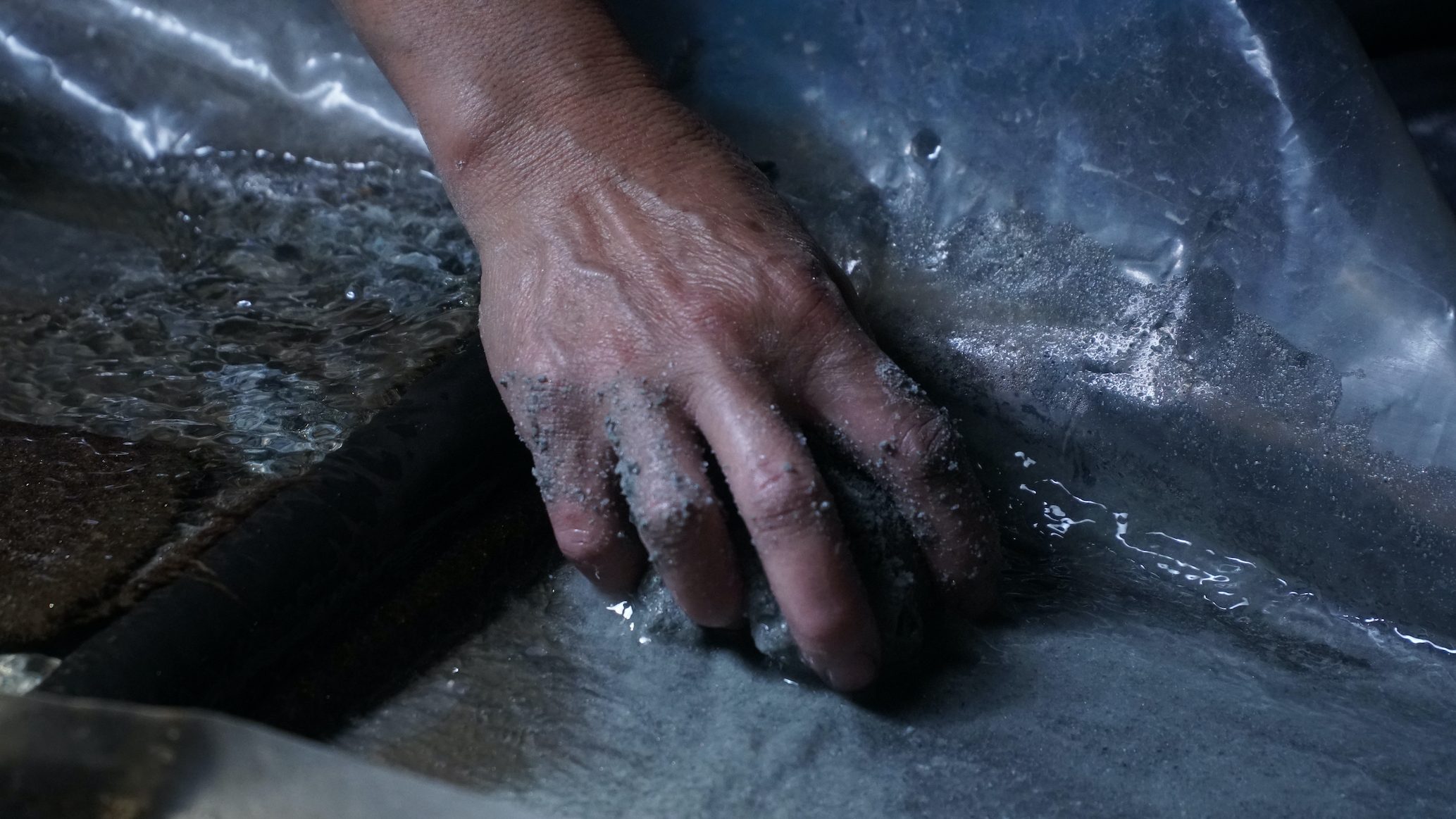
In a small-scale mine here in Sagada, fool’s gold shimmers along an inclined sluice, where women like Viernesa Lingwa, 50, use running water to wash down ore.
Going through the usual motions of sluicing and panning inside the 24-hour processing plant, they will soon recover gold.
The ball mill makes an incessant noise while churning ore. Men haul sacks of ore and put them inside the mill, then shovel the crushed ore onto huge plastic tubs.
When not sluicing ore, Lingwa, along with the two other middle-aged women in the plant, take turns cooking for the other miners in the plant. Work in the Minahang Bayan (people’s small-scale mining area) is seasonal. They have work now because there’s gold to recover.
Over the years since mining activities started around 1986, Sagada miners have been working to make the most out of the gold mined in their area, without the use of harmful chemicals like mercury.
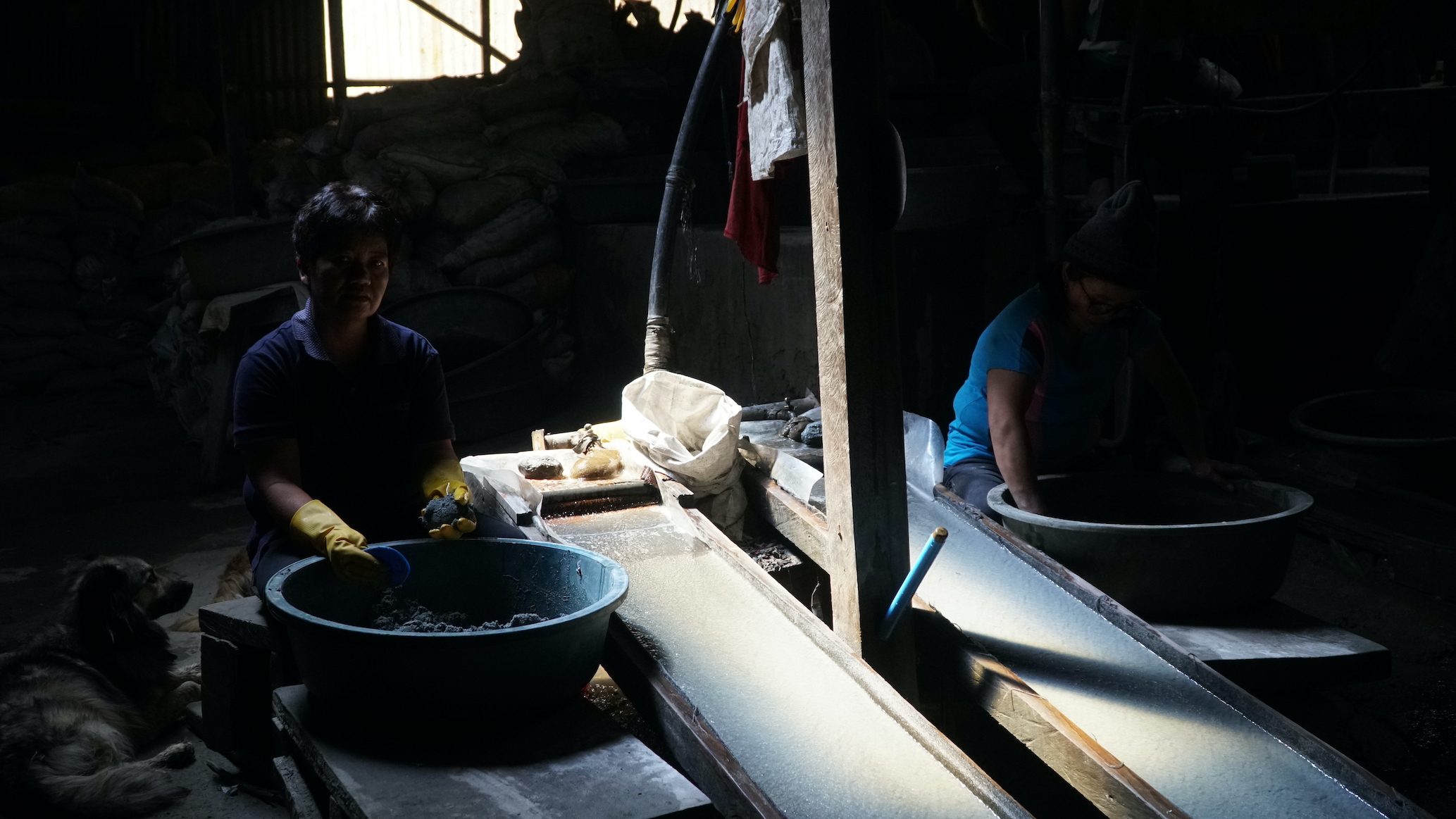
Outside, it’s dry and cold. Even at high noon, the mountain breeze is cool. The earth is loose going down the mining site. Some workers lie on sacks or on the earth to sleep under the shade of trees.
High in the mountains surrounding the small-mining area are houses, paddies, and cemented stairs. A few miles away is Bomod-ok Falls; sometimes the sound of waterfalls can be heard from a distance.
Women and gold work
Her father’s generation used mercury when they mined in the area once before, said Lingwa. Mercury is commonly used in small gold mines because it separates gold from other sediments and forms an amalgam. The amalgam is heated and mercury is released into the environment.
However, exposure to mercury puts people’s health at risk. It could enter water sources and contaminate food.
The use of the chemical didn’t take off in Sagada. Miners said mercury is not compatible with the refined texture of Sagada’s gold.
While safer and more environment-friendly, the work remains physically taxing. Without mercury, miners have to sluice and pan for hours. But this paved the way to the employment of more women like Lingwa. It has helped increase household income.
“Noong nagkaroon na ng gilingan, nagkaroon ng mga babae. Mas matiyaga ang mga babae,” Lingwa told Rappler.
(When we had processing plants, women came. Women persevere more.)
Miners would use a pan to swirl ore with water until gold, because of its density, remains at the bottom of the pan free from other sediments.
Sluicing, meanwhile, makes use of an angled platform with carpets. Miners wash down ore through these platforms with running water. Gold particles are captured on the carpets.
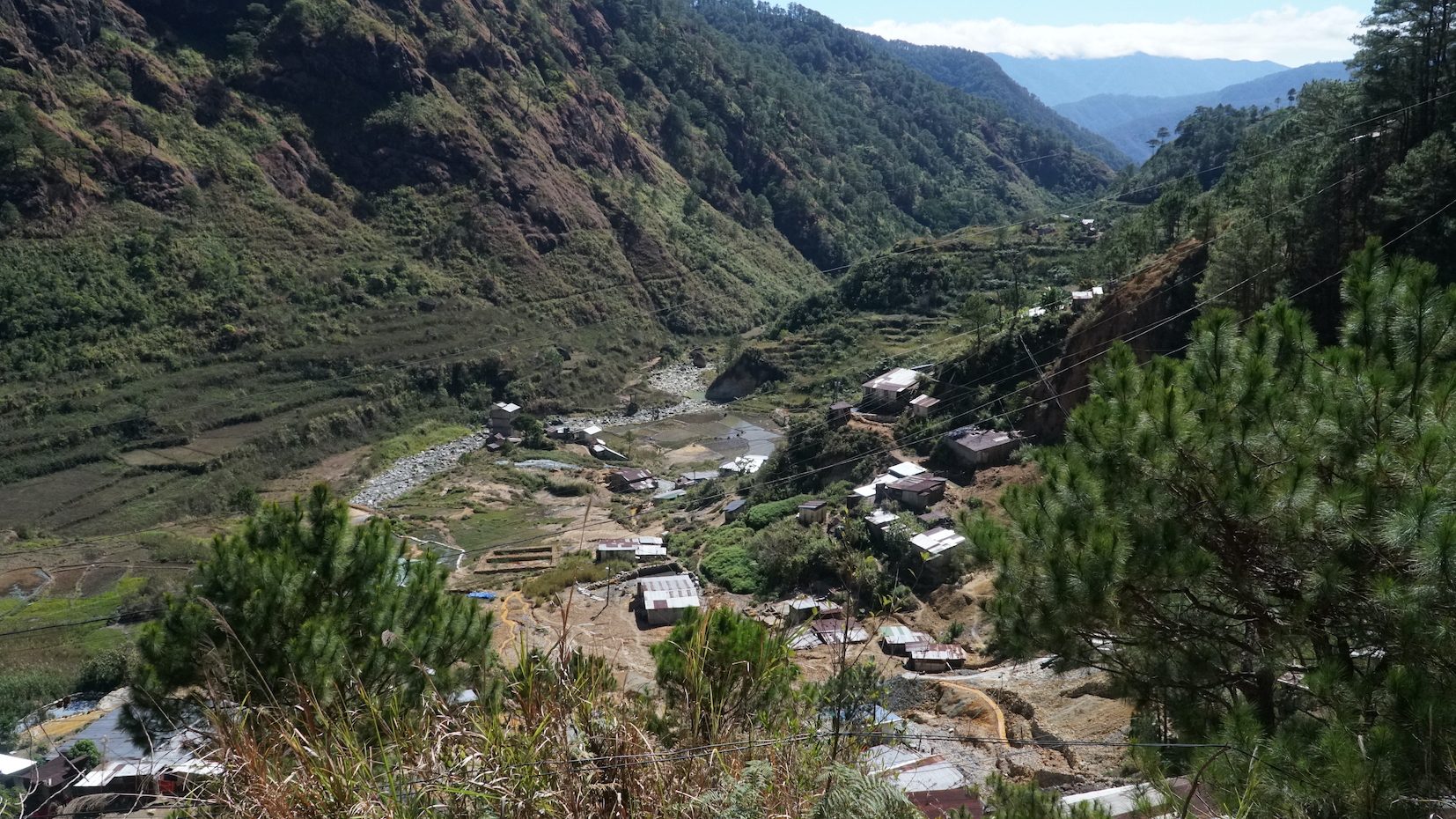
Lingwa said that unlike in farming, they have the benefit of having a roof over their heads. They also have protective gear like boots and gloves. For every shift, they earn P300. It’s not much, Lingwa said, but it helps them get by.
Work inside the plant goes for 24 hours. There are three shifts. Miners are not restricted to one particular job per shift. Lingwa said she likes going at her own pace at work. The women, who often come in threes per shift, take turns cooking in the kitchen located at the corner of the plant.
Etag, or smoked pork, hang on a strip of wood. Pots, covered in black soot, contain rice, fish, and corn cooked with condensed milk and buko pandan. Black coffee simmers in a kettle beside the rice. Boxes of vegetables and stacks of wood fuel lie beside sacks of ore.
The two other women during Lingwa’s shift were Fabiola Lay-os and Pacita Banluyan. Lay-os was manning the kitchen during lunch hour, while Banluyan was sluicing for gold.
Making the most out of gold
The problem with these manual methods is that the miners do not recover as much gold as they should.
Most of the gold they mine remain in the residues or tailings. Because of the traditional methods they use, Sagada miners can only extract free gold, or those that are not chemically bound. They sell the tailings to other parties who have access to processing equipment which can recover lingering gold.
In other parts of Cordillera, large-scale mines like Lepanto in Benguet profit from deposits of gold because they have the advantage of having the technical know-how and equipment. In general, the Philippines ranks 25th out of 123 countries with gold reserves around the world.
Meanwhile, the odds are stacked against small-scale miners working with what little they have.
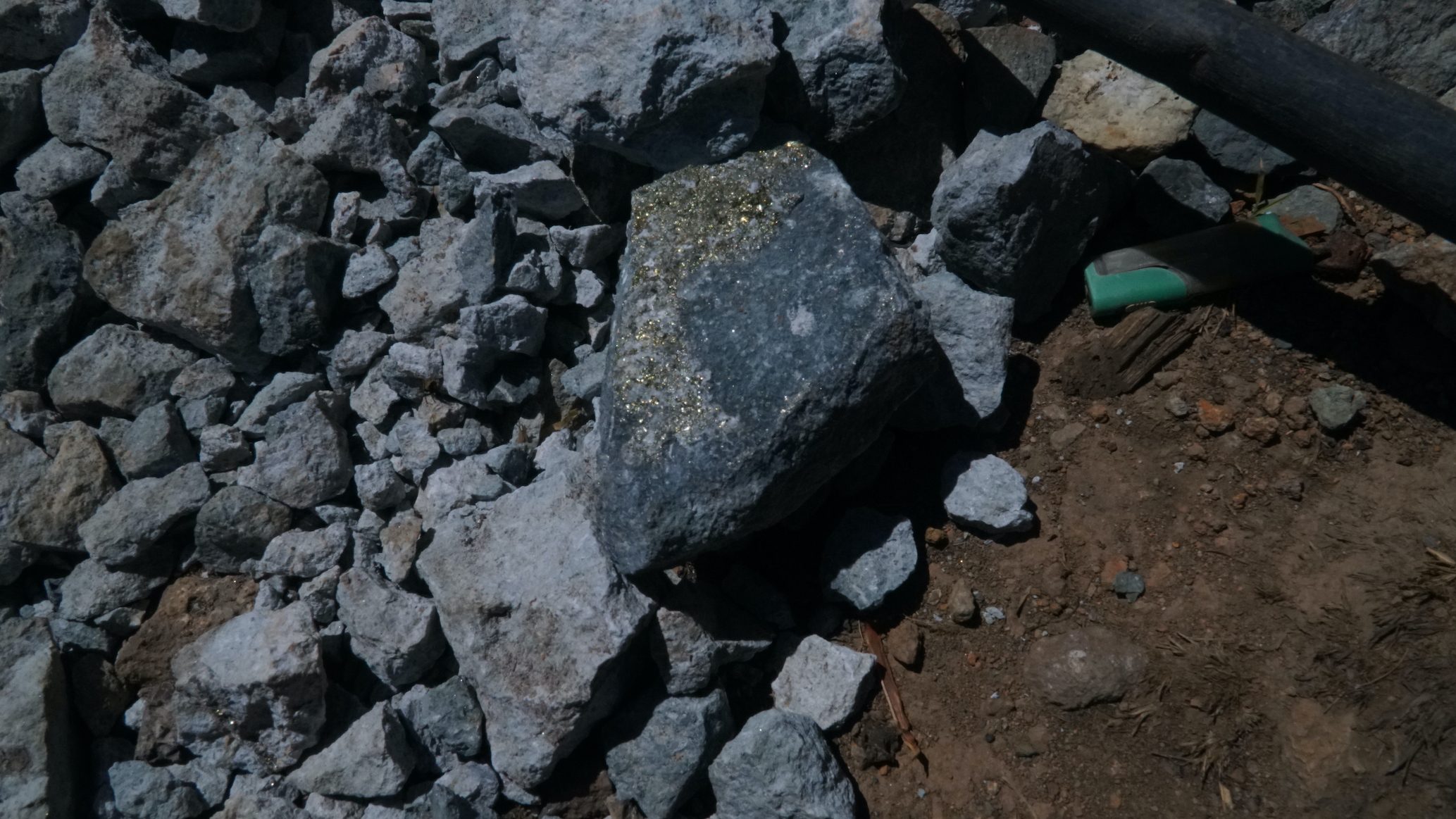
That’s why there’s a pressing need to give more attention to small-scale miners. Geologist professor Jill Gabo-Ratio said further research and knowledge-sharing would be beneficial to the community.
“If we can help them by studying gold textures, grain size, and refractoriness, we can avoid the trial-and-error system that only adds to pollutants and miners’ expenses,” she told Rappler.
Gabo-Ratio is the officer-in-charge deputy director for academic affairs at the National Institute of Geological Sciences in University of the Philippines Diliman.
She said it’s also important to determine how much gold remains in the tailings – and then eventually find more efficient ways to extract the gold.
“Yaman din lamang na kinuha na nila from the ground, mas maganda na masulit ‘yung efficiency of extraction,” she said.
(Since they already extracted it from the ground, it’s better to get the most out of the extraction and make it efficient.)
Legal and formal sector in the works
More than 30 provinces across the country are engaged in small-scale gold mining, employing 300,000 to 500,000 people, according to a report of the Philippine Extractive Industries Transparency Initiative. It gives livelihood to around two million people.
The gross production value of small-scale gold mining reached P21.86 billion in 2022. But the sector remains largely informal.
Most of them, like Lingwa, Lay-os, and Banluyan, mine to support themselves and their families with little discretionary income.
The Department of Environment and Natural Resources (DENR) has said that they are undertaking a review of laws to modernize the industry and protect small-scale miners.
“A properly regulated small-scale mining industry will benefit the community in terms of job creation and livelihood, and the country in terms of mining assets and taxes,” said Environment Undersecretary Carlos Primo David in a statement last October 2023.
“More importantly, it will address the violation of environmental laws and mining regulations, and minimize environmental risks and promote mine safety.”
Mining in Sagada goes back decades, but it was only in 2021 that the Minahang Bayan was formally recognized by the Philippine government through a provisional contract.
Mathew Malicdan, the president of the small miners association known as the Northern Sagada Small-scale Miners Association Incorporated, started working in the mines when he was still a high school student. In the ’80s, Malicdan’s father worked in the mines when it was not yet allowed by the elders.
At 53, Malicdan is now a tunnel owner in the Minahang Bayan after working in a gold mine in the Middle East and a diamond mine in Africa.
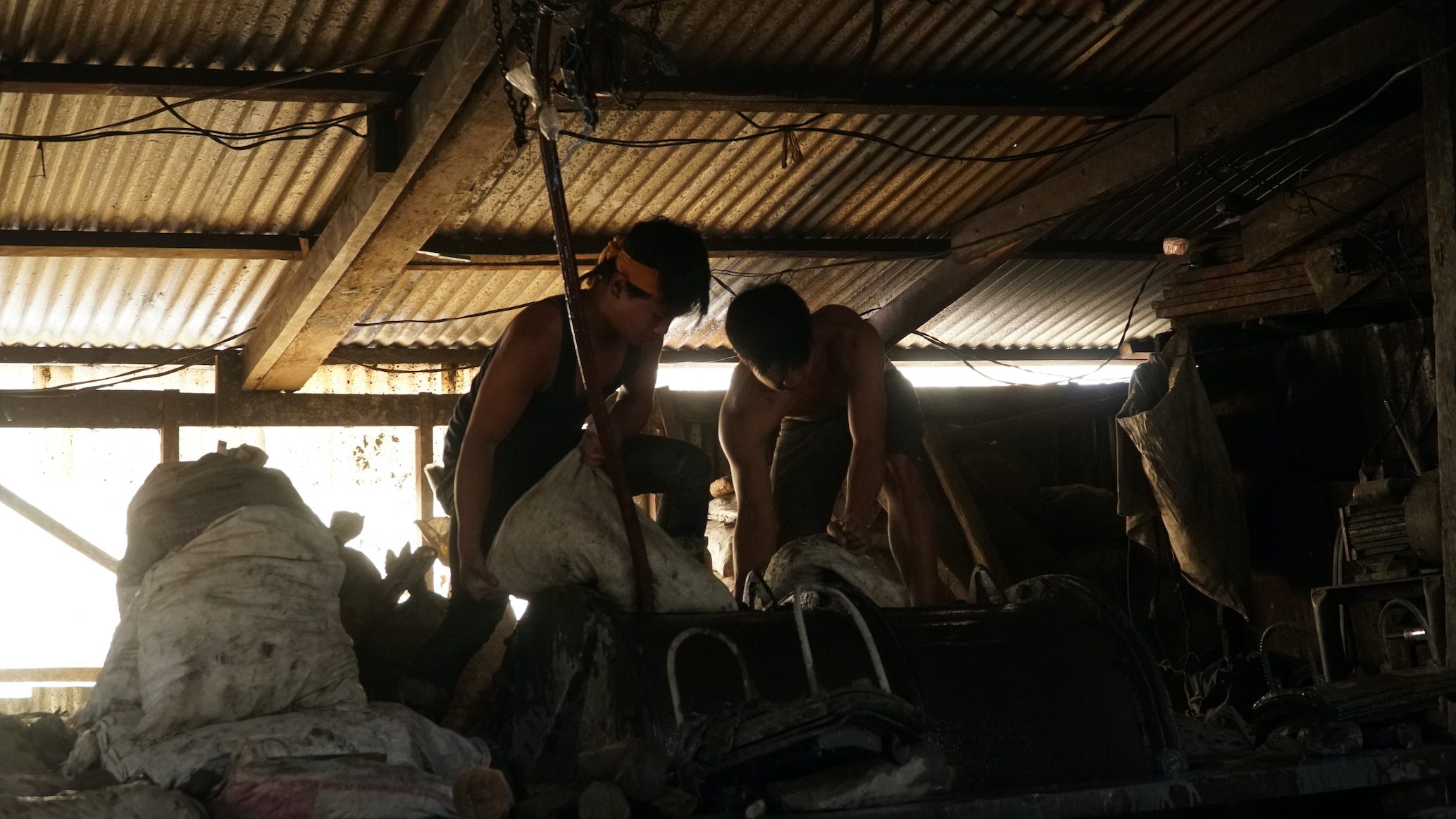
But his problem now is making sure Sagada miners do not endanger the legality of their operations by selling gold in the black market.
The black market, according to locals, consists of both Filipino and Chinese gold traders. In other small-scale mines, some traders give away mercury for free to expedite gold recovery.
Other miners find these transactions in the black market simpler: no documents and permits are required.
“Dahil nga ligal na tayo, lumugar tayo sa ligal,” he told Rappler. (Because we’re already legal, let’s do things legally.)
Malicdan recalls the long process of finally getting their operations legalized, when they started collecting funds back in 2018 to process documents needed for their application.
ALSO ON RAPPLER
- Despite formalization, small-scale gold miners still prefer black market
- [OPINION] Golden Girls: Filipino women’s contributions to artisanal and small-scale gold mining
- [Vantage Point] Gov’t turns to mining to lift economy
During the pandemic in 2020, their application for a 10-hectare Minahang Bayan zone was approved. In 2023, their contract was regularized. It was the first Minahang Bayan to be approved in the Mountain Province.
Under Republic Act 7076, also known as the People’s Small-Scale Mining Act of 1991, gold from small-scale mining can only be sold to the Bangko Sentral ng Pilipinas (BSP).
Abigail Ocate, project manager of planetGOLD Philippines, said there are many reasons why some miners prefer the old way of selling gold in the black market rather than to BSP.
There’s a minimum processing fee of P1,600. The nearest gold buying station of BSP is in Baguio City, which is six hours away from Sagada.
This is a pain point that BSP has acknowledged, said Ocate, which is why they are exploring partnerships with financial institution Cebuana Lhuillier which can be accredited to buy gold.
The law has prescribed that the BSP should establish as many gold buying stations to “fully service” small-scale mines across the Philippines.
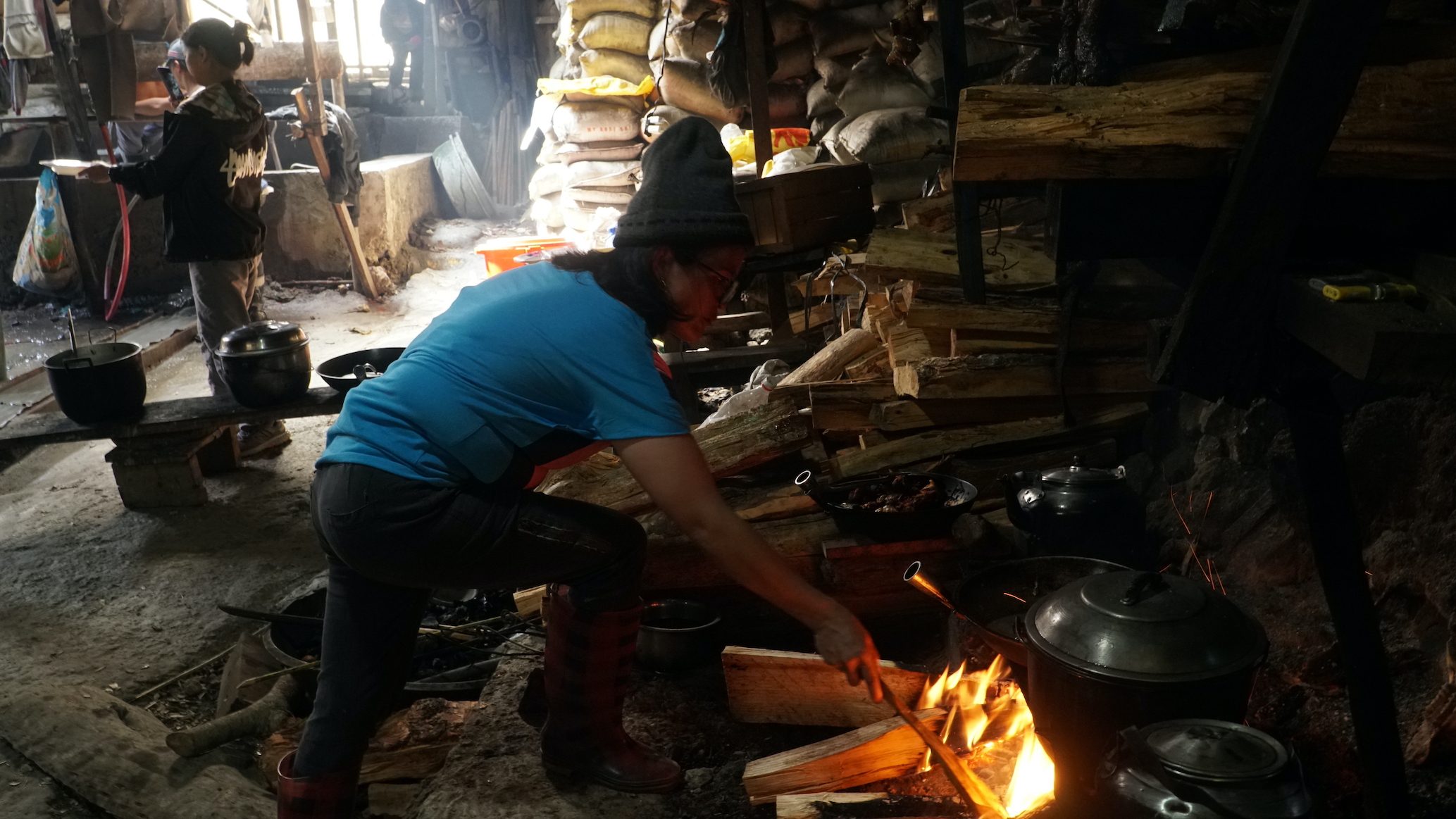
The planetGOLD Philippines is a project assisting artisanal and small-scale gold miners by non-profit organization Artisanal Gold Council, funded by the Global Environment Facility.
Their program helps mining towns like Sagada legally operate, such as in applying for a small-scale mining contract. They also aid miners organize into an effective association that can teach them how to improve gold production and recovery.
But this requires a lot of money, and small-scale miners subsist on low wages. Because of poverty, some miners get stuck in a vicious cycle, abetted by traders from the black market.
Ocate said some traders give loans to miners. “That’s what they use as incentives in the black market: ‘I’ll loan you money, then sell me your gold.'”
Funds are necessary to get permits and the equipment to mine gold, as well as comply with all the regulations.
In communities they’ve been engaged with, Ocate and her team found that some had pooled and spent millions to hire consultants to help them petition for a declaration of a Minahang Bayan.
“All the things we want to happen in the sector – to formalize them, to make them follow environmental and safety standards – for that to happen, they need capital,” said Ocate.
Light at the end of the tunnel
Sagada is a mountain town steeped in tradition. They hold their elders’ judgment with utmost respect.
Previously, PlanetGOLD had proposed constructing a leaching facility within the Minahang Bayan, but the elders wouldn’t hear any of it because it would make use of cyanide. Any mention of chemical use and the elders shake their heads.
The use of cyanide in a leaching facility helps extract gold more efficiently by turning gold into liquid. Through adsorption, gold is made to stick to coal. The coal undergoes a cold wash to remove impurities, then a hot wash. The solution from the hot wash goes through electrolysis leading to recovery of pure gold.
Out of respect for the elders, the mining association is trying workarounds to improve gold recovery.
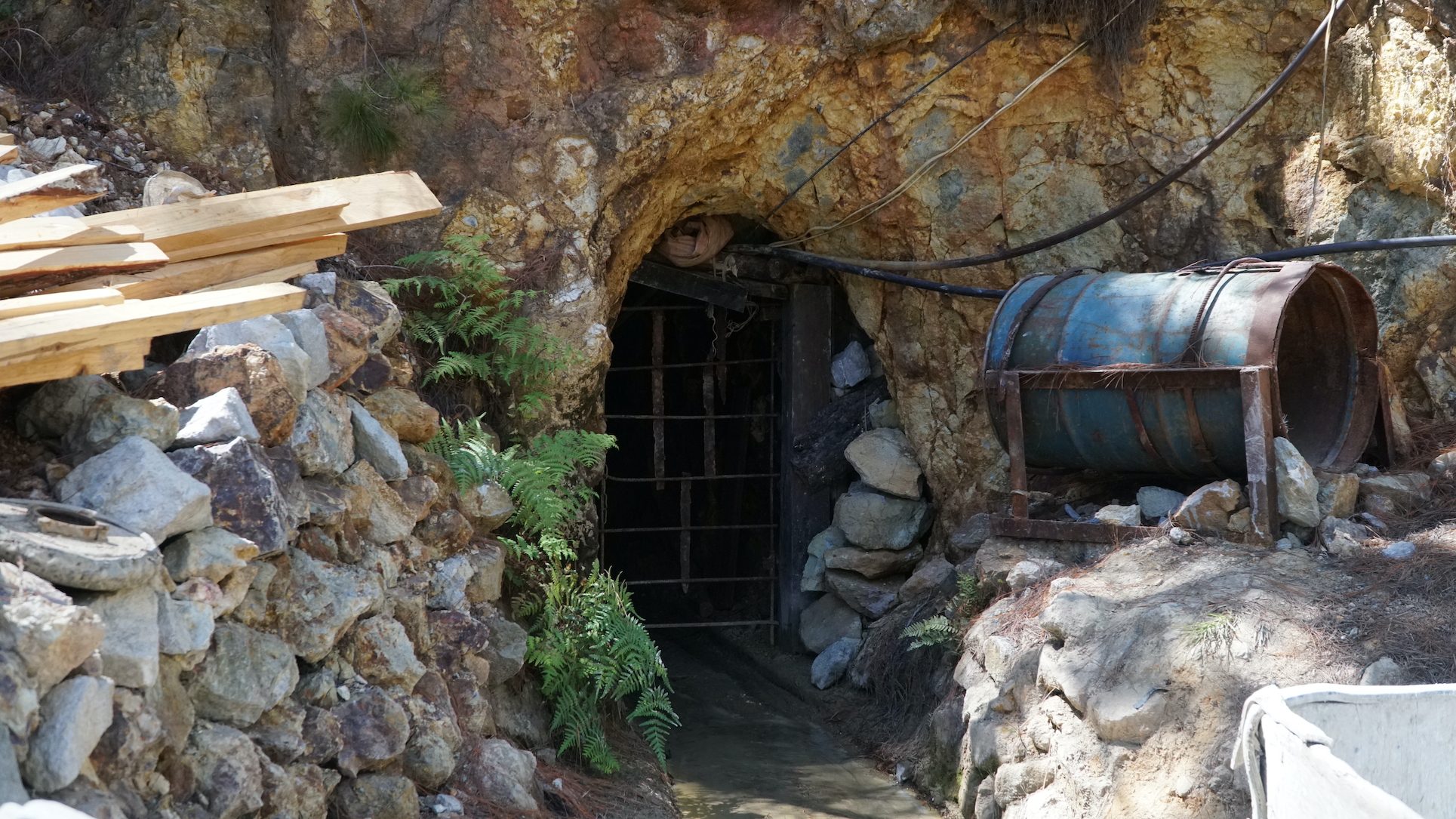
The association is exploring a possible partnership with a leaching facility in Itogon, Benguet, used by the Loacan Itogon Pocket Miners’ Association (LIPMA).
During a February 13 meeting in an inn along Sagada-Besao Road, Malicdan and Emy Dongail talked about identifying the people who still prefer the black market so they can have discussions with them.
Dongail is one of several women in the mining association where she serves as secretary-general.
Even among miners, there is apprehension about using the leaching facility in Itogon. Dongail said that according to miners, the design of the facility may not be appropriate for their tailings which are of a different nature compared to those in Benguet.
Ocate explained that the design of the facility does not matter; it’s the length of processing time and the amount of cyanide to be used that matter. These are factors that can be adjusted when they use the leaching facility.
The night ended with two important resolutions: talk to hesitant miners prior to a bigger association meeting; quell people’s concerns over the leaching facility by telling them that they are to transport and process the tailings themselves because they own the wealth.
One of the most fulfilling parts of the job for Ocate is seeing communities identify with the work they do.
Their program started just when the mining town decided to have their mine declared as a Minahang Bayan. There is so much to do and many things to think about.
But they’ve come a long way now.
Mining started without the elders’ approval and without permits from bureaucratic government institutions.
Now they’re talking about how best to extract all the wealth from the sediments they mined, sluiced, and panned with their hands. – Rappler.com
Add a comment
How does this make you feel?







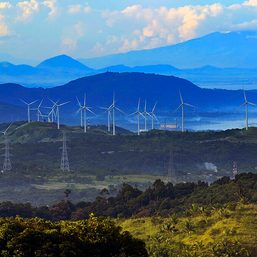




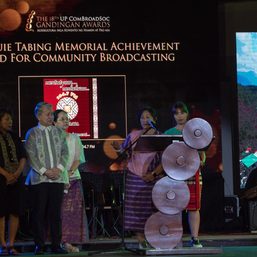
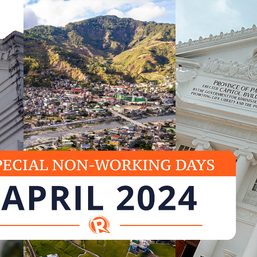
There are no comments yet. Add your comment to start the conversation.